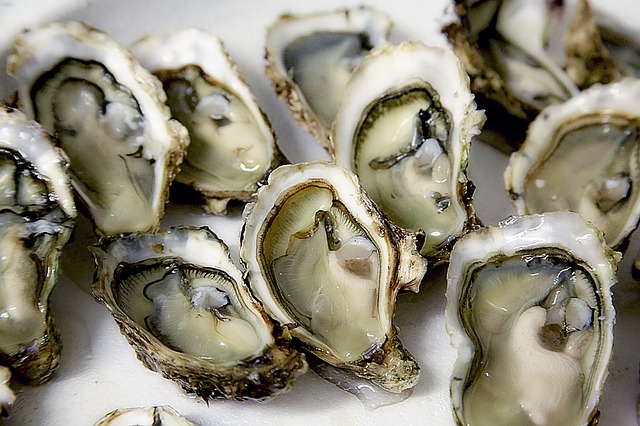February 22, 2017
Taylor Shellfish Farms, the largest farmed shellfish producer in the U.S., announced it has acquired Ekone Oyster Company on Willapa Bay, Washington, for an undisclosed amount.
Taylor Shellfish operates on 11,000 acres of tidelands in Puget Sound along the coasts of Washington State and British Columbia, producing Manila clams, Mediterranean mussels, geoduck, and a variety of live, shucked, and frozen oysters for both domestic and overseas markets. The company also operates a hatchery and nursery in Hawaii and California, a shellfish distribution business in Hong Kong, and oyster bars located in Seattle and British Columbia.
After seeing sales of $70 million in 2016, Bill Dewey, director of public affairs for Taylor Shellfish told Undercurrent News that the company was targeting sales of $100 million by 2019.
Founded in 1982 by the Jambors family, Ekone began by producing and selling smoked oysters and has grown over the years to produce live and shucked oysters, smoked oysters and sturgeon, and triploid oysters, which have an additional chromosome and are hatchery-raised. Being sterile, these oysters grow at a quicker rate than traditional diploid oysters while yielding more meat.
The deal for Ekone includes 350 acres of tideland on Willapa Bay, a nursery, processing facilities, equipment, and a smokehouse. After officially assuming control of the company on March 1, Taylor Shellfish plans to use the Ekone brand name and retain all Ekone employees.
“The Ekone Oyster Company operates an excellent business and its brand is well-regarded for its quality products. Its variety of smoked products are unique and have a strong following,” said Bill Taylor, CEO of Taylor Shellfish Farms. “We see growth opportunities for the business and Taylor Shellfish will benefit from the increased capacity of the Ekone processing facilities. With continued growth of the business, we believe we will be adding jobs in addition to the existing employee team.”
Geoduck Expansion
Taylor Shellfish appears to be moving on multiple fronts, after recently applying for permits to convert a portion of its farm in Burley Lagoon to geoduck production. Currently the 300 acre farm includes approximately 100 acres planted in Manila clams and oysters, of which Taylor Shellfish is looking to convert approximately 25 acres to geoduck.
Being filter-feeders, geoduck require no feed, no fresh water, and no fertilizers or pesticides – leading the Monterey Bay Aquarium’s Seafood Watch to give geoduck its “Best Choice” rating for highest sustainability. Less intensive than the production of oysters or clams, Diane Cooper of Taylor Shellfish explained that geoduck are initially planted in protective mesh tubes which remain in place for between one to two years, at which time they are removed. The geoduck are then harvested four to five years later, reports Key Peninsula News.
Currently in the midst of the environmental impact statement (EIS) process, three courses of action are being evaluated: the first, where all 25 acres are planted at once, the second where two thirds of the site will be initially planted, and a third “no-action” response, where all 25 acres will remain engaged in the production of only clams and oysters.
Demand from Asia is driving U.S. shellfish producers, particularly along the West Coast, to turn their attention to, or to expand their geoduck production. In 2014 the U.S. exported 11 million pounds of live wild and farmed geoduck worth $74 million to predominantly Hong Kong and China – double the volume shipped in 2008, according to the Seattle Times. At an average weight of two pounds, each geoduck can up to $100 per pound on Asian markets.
“It’s gained this luxury status. A big driver is the growing middle class in China,” Gina Shamshak, an assistant economics professor at Goucher College who has researched the geoduck market told the Seattle Times. “They want to consume the higher-valued seafood items, and geoduck is one of them.”
The cachet associated with the niche product, the level of demand, and the desire to protect wild populations has led to the development of a growing geoduck aquaculture industry, through which 1.5 million pounds of farmed geoduck are produced annually on the tidelands of Puget Sound.
In response to this growing industry, there is a small but vocal outcry from homeowners opposed to its development on the Sound, however, environmental groups studying its impact are finding that geoduck production has a light hand when it comes to environmental effects, reports Yale Environment 360.
“The studies to date have shown that the impacts are short-term in nature and small in scale,” Laura Hoberecht, an aquaculture coordinator with the National Oceanic and Atmospheric Administration told Yale Environment 360.
For Taylor Shellfish, the wait for approval to expand its geoduck production will likely stretch for at least another year, reports Key Peninsula News. A first draft of the EIS is expected to be completed early this year, according to Dave Risvold, environmental biologist with the Pierce County Department of Planning and Land Services, with a final version written and presented the following year.
-Lynda Kiernan
Lynda Kiernan is Editor with GAI Media and daily contributor to GAI News. If you would like to submit a contribution for consideration please contact Ms. Kiernan at lkiernan@globalaginvesting.com

Let GAI News inform your engagement in the agriculture sector.
GAI News provides crucial and timely news and insight to help you stay ahead of critical agricultural trends through free delivery of two weekly newsletters, Ag Investing Weekly and AgTech Intel.




